Nikon Z6 vs Sony A7 III: How do they compare?
How does Nikon’s first-ever full frame mirrorless Z6, compare to Sony’s well established, market-leading A7 Mark III?
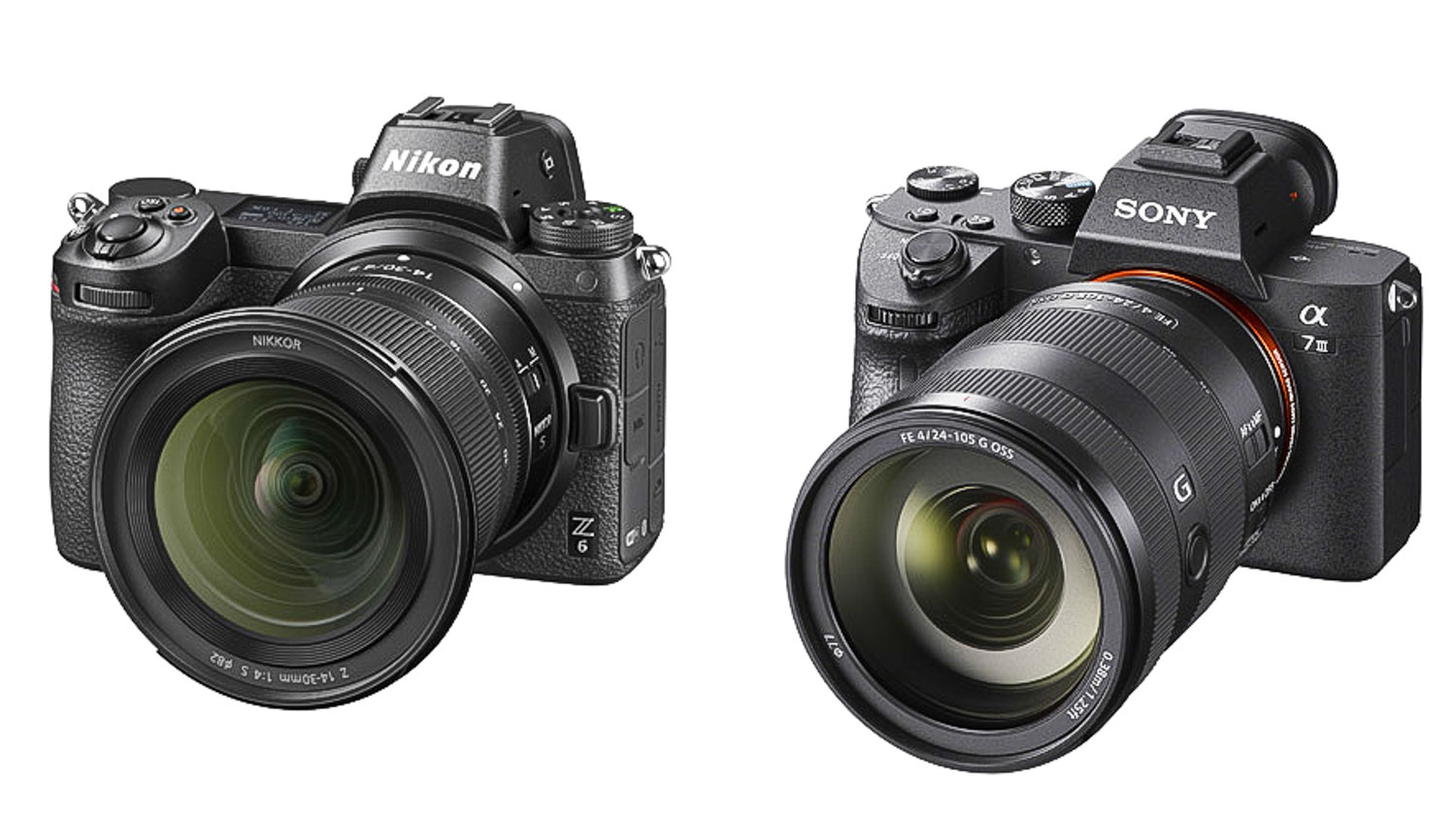
The most exciting news out of Nikon in the past two years has been the release of not one but two full frame mirrorless cameras: the 45.7 megapixel Z7, and it’s more affordable, some would say even more flexible, 24.5 megapixel Z6 sibling. Both of these well reviewed offerings suggested their manufacturer had decided to start taking mirrorless cameras seriously, with Nikon having previously seen its market share eroded by Sony and its full frame mirrorless A7 series.
So, given there’s already metaphorical ‘bad blood’ between the two, it makes perfect sense to pit Sony’s acclaimed A7 Mark III against Nikon’s (relative) new kid on the block in the Z6, which we declared ‘stellar’ on first review, and far from a consolation prize for those who can’t afford the Z7. It also rings true for these two to square up, as Sony’s Mark III could itself be viewed as the junior partner of the A7 lineup.
Before we delve into the nuts and bolts of the Z6’s features in the details that follow – it’s worth giving a brief overview of Nikon’s offering. Rather than using its existing F mount, as utilized by Nikon’s full frame DSLRs, Nikon went back to the drawing board for its mirrorless ‘Z’ series and developed a whole new ‘Z’ mount. The thinking was to enable the use of bigger ‘glass’ and a step up in picture quality. However, the downside is that if you have a collection of Nikon F format lenses already, you’ll need to invest in an optional ‘FTZ’ adapter. The need arises because at 55mm across, the Nikon Z mount is 11mm wider than the F mount.
For its own part the Sony A7 III is a competent camera, well worth checking out, even if you do already have a collection of lenses for another system entirely. Yes, on paper this third-generation unit may be the cheapest and less well specified camera in the Sony A7 series; yet in practice its price, burst rate and oversampled full width 4K video seek to make it a highly capable all rounder across a full range of photographic disciplines.
So do you feel the need for Nikon, or are you already sold on Sony? Whichever of these two full frame contenders you choose, we wager you’ll still end up with a result providing you with years of reliable service. But to help you make that first step towards choosing either the Nikon Z6 or the Sony A7 Mark III, we’ve provided a bunch of comparisons in terms of specification and performance. So, to get a sense of which camera will best fit your own particular needs, read on!
Sensor and processor
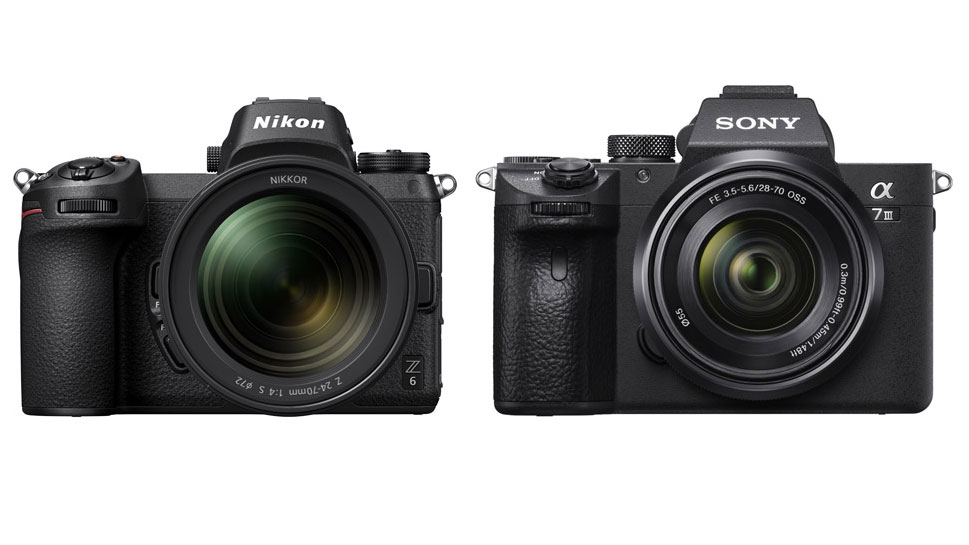
• Nikon Z6: 24.5 megapixel full frame CMOS sensor (35.9x23.9mm) and Expeed 6 processor
• Sony A7 III: 24.2 megapixel full frame Exmor R CMOS sensor (35.6x23.8mm) and Bionz X processor
The mirrorless Nikon Z6 and Sony A7 III both offer the distinct advantage of full frame photography – meaning that the size of their identically matched sensors is directly comparable to that of a frame of 35mm film. This means that 35mm equivalent calculations can be conveniently jettisoned and that the focal lengths mentioned on attached lenses will directly translate.
Full frame chips in both also ensure that, in theory, image quality will be noticeably better than that achievable with a standard (smaller) APS-C sensor DSLR – particularly when combined with directly compatible full frame format lenses – ‘Z’ mount in the case of the Nikon and E-mount as regards the Sony.
The Nikon Z6 and Sony A7 III not only both boast a full frame sensor – the resolution we are getting out of it is nigh on identical – 24.2 effective megapixels for the Sony and 24.5 MP for the Nikon.
On the Z6 its sensor is coupled with Nikon’s latest generation Expeed 6 processor, which means that operation fairly zips along, while the Sony is no slouch either, in featuring a Bionz X processor.
Read more:
• Best Sony lenses
• The best Sony cameras in 2020
Video
• Nikon Z6: 4K at up to 29.97fps
• Sony A7 III: 4K at up to 30fps
The mirrorless Nikon Z6 offers full frame uncropped 4K video, down-sampled from oversampled 6K, up to an actual maximum of 29.97fps. It can additionally record Full HD footage at up to 120P for those looking to achieve a slow-motion look.
Another advantage is the ability to capture and extract still frames whether filming in 4K or at Full HD. The latest generation Expeed 6 processor aids videographers too, in helping to deliver clean lines and noise and moiré free imagery.
It’s also worth adding that directly compatible Nikkor Z lenses have been designed with silent autofocus and reduced focus ‘breathing’ and focus shift when zooming. This all helps ensure that the Z6 is as competent and creatively flexible when shooting video as it proves when shooting stills.
Naturally with a wealth of expertise in video behind its manufacturer the A7 III also offers 4K capture, here at up to 30fps. This is captured across the full sensor width, before being down-sampled to 4K resolution, so there are likewise no annoying crop factors here or inefficient pixel binning.
Sony also offers 4K HDR playback on compatible devices via its Hybrid Log Gamma (‘HLG’) profile, and boasts its manufacturer’s own S-Log3 mode for increased dynamic range (up to 14EV).
Burst shooting (fps)
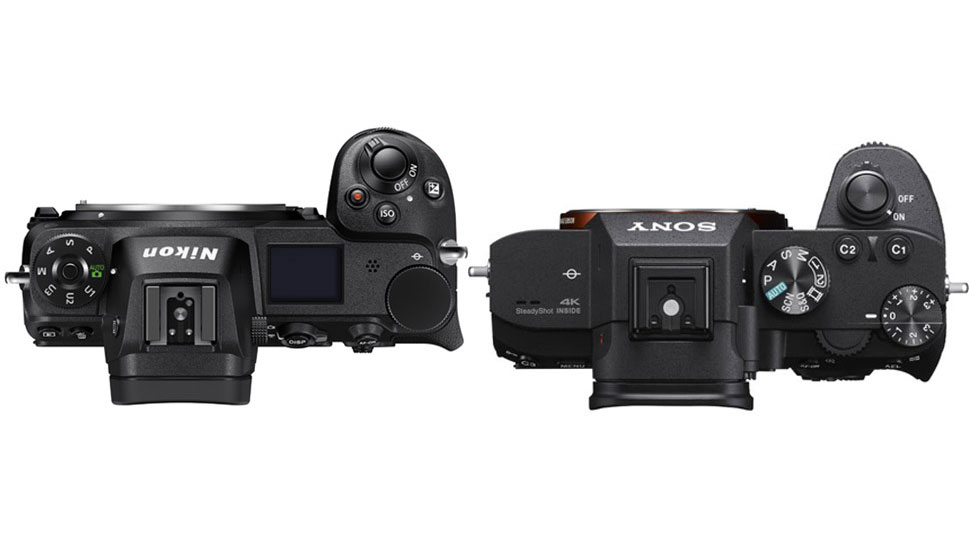
• Nikon Z6: Up to 12fps
• Sony A7 III: Up to 10fps
Both cameras are fairly adept when it comes to burst shooting – making either suitable for sports or wildlife photography. The Nikon Z6 offers its users a very impressive 12fps, though the buffer capacity feels rather average, in being able to capture no greater than 37 Raw files in one of its 12fps bursts, or alternatively 44 maximum resolution (Large, Fine) Jpeg files. Select a lower frame rate therefore to be able to shoot bursts of images longer than three to four seconds.
By contrast the Sony on paper looks the weaker contender in ‘only’ managing 10fps – but that’s impressive by any standards and is, in fact, double the speed of its Mark II predecessor. The Sony A7 III also has a bigger buffer capacity than most enthusiast models, in being capable of capturing up to 40 uncompressed Raw files in a single burst, 89 compressed Raw files or an even better 177 Jpegs. We criticized previous models in the series for the inability to use the camera menus once the buffer is full, but its manufacturer has happily fixed that on the A7 III.
One of the mild controversies that’s dogged the Z6 since launch is that it offers just one media card slot and is wholly reliant on XQD cards only. The thinking is that the fast and robust format is ideal for the high-end camera and its equally high-end audience, but it does mean further investment for anyone who already has a drawer full of older SD and CF cards. On the Sony A7 III, we get the advantage of two card slots to write to – and here we find support for the commonly used SD card too.
On paper, at least, the Z6 is the better option if it is speed of capture for sports and action photography that is of greater import, though the Sony’s buffer memory capacity arguably makes it the more flexible and practical option, particularly if you are happy to shoot Jpegs.
AF system
• Nikon Z6: 273 point autofocus system
• Sony A7 III: 693 point phase detection AF system/ 425 point contrast detection AF
The Z6 features a very impressive 273-point phase detection AF, also covering 90 per cent horizontally and vertically. That may be almost half as many AF points as the Nikon’s higher cost Z7 sibling, but nevertheless the more affordable Z6’s autofocus performance is hard to fault, in being fast and responsive. Its AF system’s silent nature also aids the shooting of video.
Sony has gone a step further with its A7 III, in incorporating AF technology from its flagship sports camera, the A9. This means we are gifted with a whopping 693 phase-detection points covering some 93 per cent of the image area.
This is backed up with 425 contrast detect AF points, thereby making it the most powerful AF system on the market (at the time of writing).
Autofocus performance has been the battlefield of rival camera manufacturers of late and Sony has done much too with its Eye AF mode, which is a great boon for people photography. On the A7 III this feature now works in both continuous as well as single shot AF modes. Put simply, the AF system on the Sony is very, very impressive indeed.
That’s not to say the Z6 should be totally discounted by comparison; especially as Nikon has such a rich heritage of lens technology to draw on.
Yet it’s worth reminding anyone considering a Z6 purchase that, should they have an already significant collection of Nikon ‘glass’, Nikon’s Z mount does not have an autofocus screw drive, so older AF lenses will be restricted to manual focus.
However, on a more positive note, if investing in an optional FTZ lens adapter, a wide compatibility with existing Nikon F lenses will enable existing Nikon users to migrate to the new system in their own time and at their own pace.
Viewfinder & LCD
• Nikon Z6: Electronic viewfinder with 3,690K dots and offering 100 per cent frame coverage; 3.2-inch LCD with 2,100K dot resolution
• Sony A7 III: Electronic viewfinder with 2,359,296 dots and offering 100 per cent frame coverage; 3-inch LCD with 921,600K dot resolution
Both the Nikon Z6 and Sony A7 III offer users an electronic as opposed to optical viewfinder. Here the balance would appear to be tipped in the Nikon’s favour, as it not only has a higher resolution EVF, but it also has a marginally larger back plate LCD, and one that likewise offers a higher resolution in a straight comparison with the Sony.
For the record, the Nikon Z6 supplements its 100 per cent coverage, 3,690K-dot resolution eye-level EVF with a very useful 3.2-inch vertically tilting (as opposed to vari-angle) LCD touch screen at the rear.
This monitor can be utilised to set the focus point and fire the shutter with a mere tap of the finger. The Nikon’s monitor here boasts a resolution of over 2.1 million dots and delivers a commendable life-like image; whether in stills capture or video mode.
When it comes to the Nikon’s EVF this likewise is so sharp it’s easy to forget you’re not using an optical viewfinder – should you have a pre-existing preference one way or the other – with its digital nature only becoming apparent if moving the camera very quickly. This can occasionally result in some slight image lag or blurring.
That said, it’s less pronounced than rival cameras we’ve tried. Put simply, on the Z6 Nikon has quite clearly prioritised the quality of its viewfinder, with the eyepiece uses an aspherical element and fluorine coatings.
As noted, by comparison the Sony’s electronic viewfinder and LCD don’t have the higher resolutions we’ve seen in the mirrorless segment. But they are both more than adequate in practice, with the A7 III’s 0.78x magnification meaning that it is at least big and clear. Its rear LCD also boasts a tilting action, though, as on the Nikon, it does not swing outwards from the body.
You can, however, tap it to direct your focus point, which can even be dragged around the frame. And if you’re not a fan of touch-screen interaction, the four-way control pad to the right of the LCD can alternatively be used.
Build and design
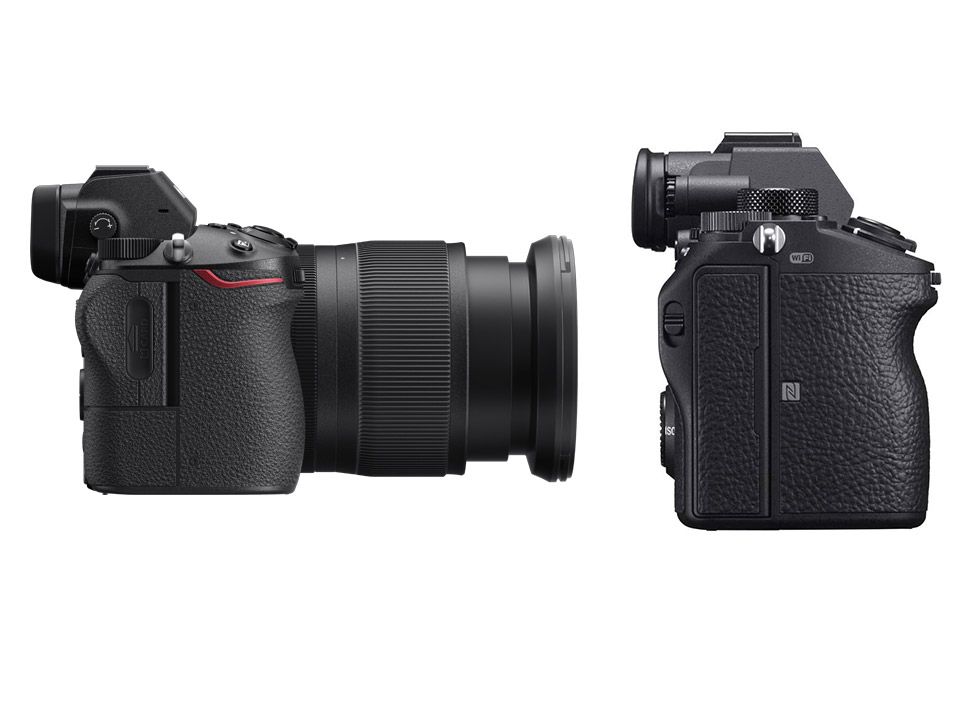
• Nikon Z6: Magnesium alloy weather-sealed construction
• Sony A7 III: Magnesium alloy and plastic, weather-resistant construction
The Z6 can be viewed as the mirrorless interpretation of Nikon’s D750 DSLR, albeit in a smaller chassis. It more closely resembles Sony’s rival A7 full frame mirrorless series, however, rather than its maker’s own DSLRs.
For its part, Sony’s A7 III is remarkably compact for a full frame camera. Unfortunately its maker’s lenses are not small, leading to the set up occasionally feeling a bit front heavy when a big lens is fitted. There is, however, an optional Sony VG-C3EM battery grip should you want to bulk things up – which may be especially useful if telephoto lens based sports photography is your bag.
We felt it was a bit of a shame, however, that Sony hadn’t included a dedicated drive dial or AF mode/area lever on the A7 III, especially as burst shooting and autofocus are arguably this camera’s top two features.
The Z6 weighs a relatively lightweight and manageable 675g without the lens, while the Sony comes in at a marginally lighter 650g. Dimensions for the Z6 are a compact 134x100.5x67.5mm, and it manages to find room for both an AF-On button on the backplate – a favorite feature of sports photographers – and a thumb stick for moving the focus point around the image area.
Boasting a magnesium alloy body, the Z6 is extensively weather-sealed, while delivering a claimed 200,000 shot shutter life. The Sony is similar in overall size, while being a tad less broad in measuring 126.9x95.6x73.7mm. It boasts top and front plates manufactured from a tough magnesium alloy over an internal frame for added rigidity. While Nikon’s body is weather sealed, Sony makes the claim for being weather resistant.
Nikon also introduced a functional first on its Z6 (and Z7): namely an in-camera image-stabilization system. This provides the equivalent of an extra five stops – making it, as a result, an important new feature. Should you also want to add a degree of robustness and balance to the Z6, look at the optional Nikon MB-N10 grip, which, as with the Sony A7 III, can further extend its camera’s battery life.
Sony has long offered image stabilization built into its cameras via its aptly named SteadyShot system, claimed to likewise give a five-stop advantage. Results will depend on the shooting conditions, lens used and subject distance – but any image stabilization is better than none at all.
Other features
As noted at the outset, on the mirrorless Z6 debuts a new lens mount, on which the flange to sensor distance is just 16mm, which is a good degree shorter than the regular Nikon F mount. This allows plenty of space also for the brand’s FTZ adapter, which, when affixed, affords the possibility of using the camera with 90-odd current Nikon optics and achieving full autofocus and auto exposure into the bargain.
The Z6 controversially features just the one XQD memory card slot – whereas a second slot for more common SD card may have been useful. We get two SD card slots on the Sony A7 III, by comparison, and like the Nikon, both cameras feature the advantage of body integral image stabilisation systems, purporting to offer users a five-stop advantage.
Battery life
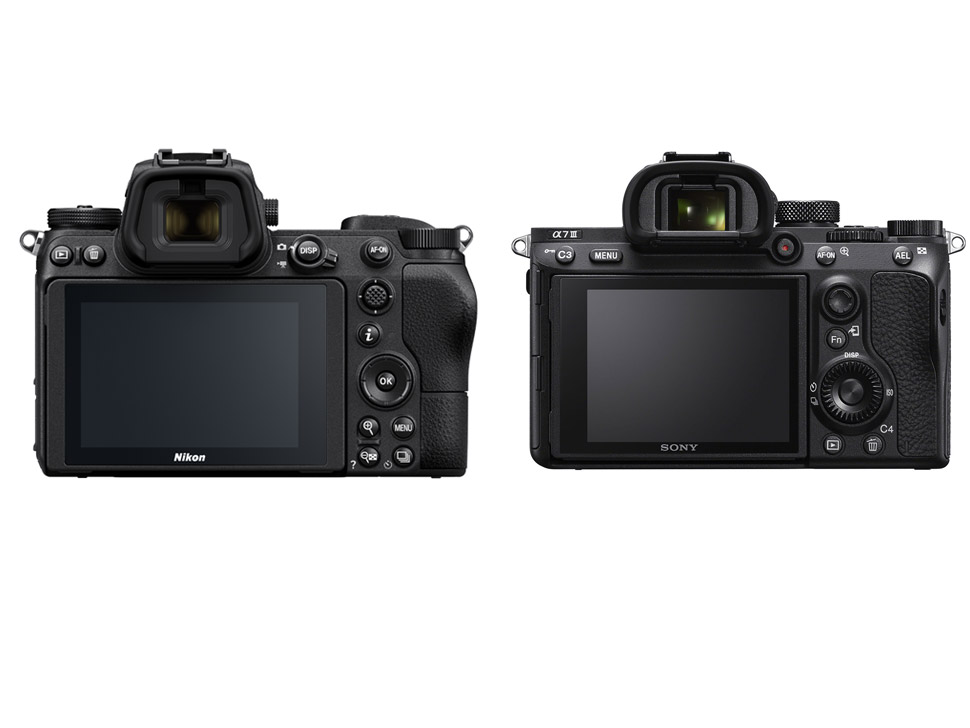
• Nikon Z6: Up to 310 frames per charge of its lithium ion EN-EL15b battery
• Sony A7 III: Up to 710 frames per charge of its lithium ion NP-FZ100 pack
We’d expect the power performance of a mirrorless camera to be notably less impressive than that of a DSLR – smaller dimensions normally resulting in a physically smaller battery too – and, yes, the Z6 doesn’t buck that trend. Its performance of just 310 frames from a fully charged cell does look particularly disappointing, however, when rated against the Sony’s, which manages up to 710 shots – more than double the Nikon’s – if using primarily that camera’s LCD. Even if exclusively using the Sony’s EVF, it still manages to eke out an impressive 610 shots from a fully charged cell.
It won’t be a surprise therefore to hear that we described the Z6’s battery performance as ‘weak’ upon review. While Nikon adds that the Z6 can also accept older EN-EL15a or EN-EL15 batteries, we get even less out of those on a full charge. For this segment of spec, the Sony is the clear winner. Don’t forget, however, that optional battery grips for both cameras are available.
Verdict
Both the Nikon Z6 and Sony A7 III are solid full frame mirrorless contenders. While it might at first appear that the Z6 is a slightly less exciting yet more affordable version of its Z7 bigger brother, it is arguably a more versatile camera, so if it’s a Nikon you’re set on, this is an able choice.
While a 24MP camera is hardly headline news these days, what pushes the A7 III and the Z6 beyond the ordinary is the fact that the image quality resulting from the combination of the camera’s full frame sensor and dedicated lenses (Z mount in the case of the Nikon, E mount for the Sony) is simply stellar.
While battery life is much better on the Sony, as is its AF system, which may make it the preferred tool for sports and action photographers despite a marginally less swift burst rate than the Nikon, in many regards the cameras are fairly evenly matched.
So if it’s the more lightweight mirrorless camera format that has you tempted, then you won’t go far wrong in breaking open the wallet for either of our competing, yet ultimately dynamic, duo.
Read more
Best Nikon lenses: expand your Nikon system with these lenses
Nikon D750 vs Nikon D850: what's the difference?
Get the Digital Camera World Newsletter
The best camera deals, reviews, product advice, and unmissable photography news, direct to your inbox!
Gavin has over 30 years’ experience of writing about photography and television. He is currently the editor of British Photographic Industry News, and previously served as editor of Which Digital Camera and deputy editor of Total Digital Photography.
He has also written for a wide range of publications including T3, BBC Focus, Empire, NME, Radio Times, MacWorld, Computer Active, What Digital Camera and the Rough Guide books.
With his wealth of knowledge, Gavin is well placed to recognize great camera deals and recommend the best products in Digital Camera World’s buying guides. He also writes on a number of specialist subjects including binoculars and monoculars, spotting scopes, microscopes, trail cameras, action cameras, body cameras, filters and cameras straps.

